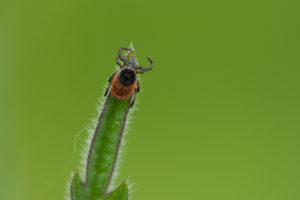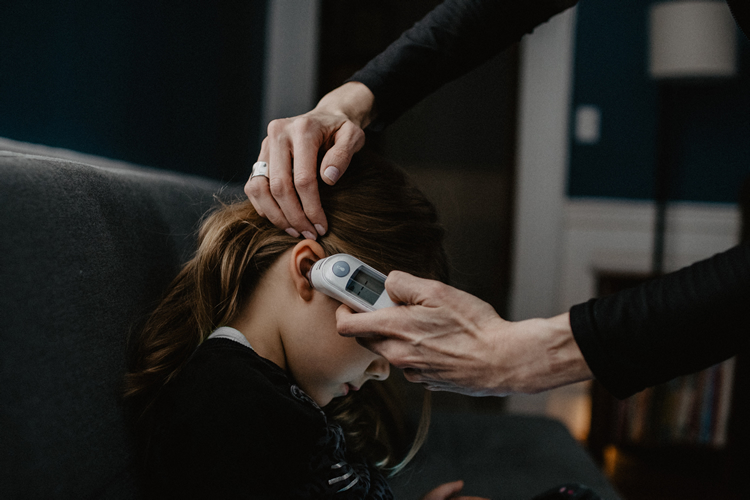The CDC estimates that there are up to 300,000 cases of confirmed and unconfirmed Lyme disease infections per year in the United States.

Did you know that there are three stages of Lyme disease? Each stage happens after a particular passage of time following a bite from an infected tick. Though there are about 30,000 confirmed cases of Lyme in the U.S. each year, experts predict that most cases go unconfirmed. Lyme can be difficult to diagnose. Lyme can also lie dormant in the first two stages, only showing symptoms months or years after a tick bite.
What are the 3 stages of Lyme disease?
Stage 1: Early Localized Lyme
In this stage of infection, patients might notice a Lyme rash, often in the shape of a very defined bull’s eye. This stage occurs within 30 days after a bite from an infected black-legged tick. Other symptoms in this stage might be fever, chills, fatigue, headache, joint pain, and sore throat. Early localized Lyme is treated with a round of strong antibiotics. Most often, early localized Lyme disease can be cured with doxycycline.

Stage 2: Early Disseminated Lyme
This stage of Lyme disease happens weeks or months after a bite from an infected deer tick. Symptoms in this stage are a bit different and can be more sever than in stage one, because the bacteria is spreading through the body. In stage two, patients can experience fever, conjunctivitis, memory loss, interrupted sleep, mood swings, and numbness in extremities. Sufferers might feel as if they have a severe case of flu in stage two.

Stage 3: Late Disseminated Lyme
Stage three of Lyme disease is also known as chronic Lyme. If Lyme is left untreated or is not treated effectively in early stages, the disease becomes chronic. Sufferers of chronic Lyme are left to treat various symptoms for life, and often find it difficult to receive proper medical care. Some doctors even doubt the existence of chronic Lyme, leaving sufferers feeling alienated. Specialized care is a must in this stage of Lyme disease. Some of the symptoms are chronic arthritis, irregular heart rhythm, brain infection, seizures, and skin ailments. Chronic Lyme has been mistaken for Alzheimer’s in some very prominent cases, like that of Kris Kristofferson.

Other Lyme disease facts:
- It is estimated that about 70% of Lyme infections result in a bull’s eye rash. That number is even less for kids at 10%.
- Dogs can contract Lyme disease, and most times remain uncured for life.
- Lyme disease in teens can cause suicidal tendencies.
- Early detection and treatment are the keys to preventing chronic infection.
Central Mass residents must protect themselves from the threat of infection with effective tick control.

Central Mass enthusiast for effective season-long mosquito and tick protection
Professional Central Mass tick control is our best ally in the fight against tick bites, and it is available all year long. In the spring, summer, and fall, barrier tick spray is an essential part of Lyme disease prevention. In the late fall and through the winter, tick tubes will carry on the fight, decreasing the number of ticks that will emerge in the spring.
3 thoughts on “3 Stages of Lyme Disease”
Comments are closed.